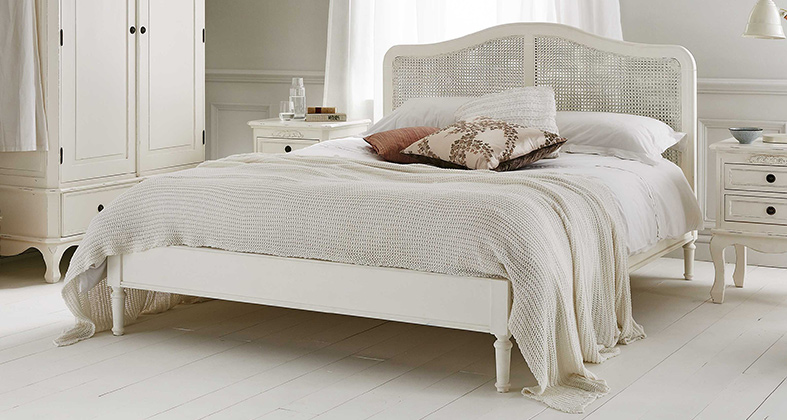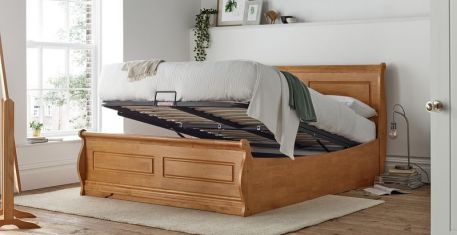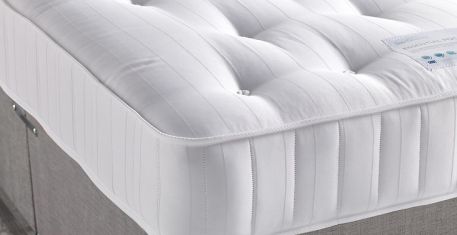
Allergies can really make sleep an uncomfortable experience if you don't have the right mattress. The itchy eyes, runny nose and headaches associated with allergic reactions can make it hard to drift off, and even when you do, allergies can make conditions like sleep apnoea worse.
According to research by Allergy UK, there are at least 12 million people in the UK who are allergic to something within their own home. 59% of those who suffer from these "indoor allergies" say their symptoms are worse in the bedroom.
While medications can offer temporary relief, the best long-term solution is to clear your sleeping space from the things you're allergic to in the first place.
What causes allergies?
While allergies can be triggered by a wide range of things, in the bedroom it usually comes down to dust mites. These microscopic creatures live in every home, especially in bedding and carpets, and their waste products contain a protein that causes allergic reactions in a large number of people.
Unfortunately, it's near-impossible to get rid of dust mites completely – even thorough cleaning and vacuuming will only remove a small portion of them. Allergies can also be triggered by mould and mildew, which can build up inside your mattress without you being aware of it. This tends to happen more frequently with foam-based mattresses and pillows.
Finally, the materials used to produce mattresses can trigger allergies for some. While less common than mite and mould allergies, some people are allergic to the flame-retardant chemicals mattresses or treated with, or even the latex in the foam (including memory foam). Naturally, sufferers of these allergies should look carefully at the materials in their mattresses and ask the vendor for more information if they're unsure.
What are the best mattresses for people with allergies?
Although there's no one-size-fits-all solution, if you suffer from any allergies it's probably a good idea to look for a hypoallergenic mattress. Bear in mind, though, that "hypoallergenic" is an unregulated term – in other words, just because it says so on the label, it doesn't necessarily mean you're guaranteed not to have any problems with allergies.
Generally speaking, inner spring mattresses aren't great for people with allergies (or asthma). Their inner cavities provide a home for dust mites, mildew, skin cells and so on – all the things that can trigger common allergies. It's better to choose something with a solid core: memory foam or latex with no coils or springs mean fewer places for allergens to hide!

Latex is naturally hypoallergenic and antimicrobial, so it's hard for the majority of things that trigger allergies to gain a foothold there. However, a small proportion of people are allergic to latex as well. It's usually a contact allergy, so if your reaction is mild, you may still be able to use one if you combine it with sheets and a mattress pad, as long as you avoid handling the mattress itself.
What else can I do to combat allergies in the bedroom?
While you can't stop dust mites completely, "barrier bedding" products can be a great way to limit their impact. Anti-allergy mattress and pillow protectors provide a layer of protection between you and the nasty stuff.
They're normally made of non-porous fabrics, which prevent moisture from getting into the bed too, limiting the spread of mould. However, some people find these kinds of bedding get a bit too warm in the summer months.
You should also make sure you're washing your bed linen regularly at a high temperature – Allergy UK recommends washing it at 60°C least once a week, which helps to kill dust mites.
If you are having ongoing problems with allergies at night despite using a hypoallergenic mattress and protectors, the problem might not be in your bed! Dust mites also live in rugs, carpets, curtains and stuffed toys, so regular dusting and vacuuming might help.
Keep wardrobe doors closed to stop dust particles from your clothes travelling through the air, and look out for anything else that might be causing the issue, such as flowers or the paint on the walls. You might also find turning the heating down helps, as mites breed more quickly in warm environments.
Finally, keep in mind how old your mattress and pillows are. Your mattress should be replaced at least once every eight to ten years, and your pillows every year.
Allergy checklist:
- Use hypoallergenic mattress and pillow protectors
- Wash your bedding at 60°C every week
- Replace your inner spring mattress with a memory foam or latex one
- Dust and vacuum your sleeping space regularly
- Decrease the temperature in the room



